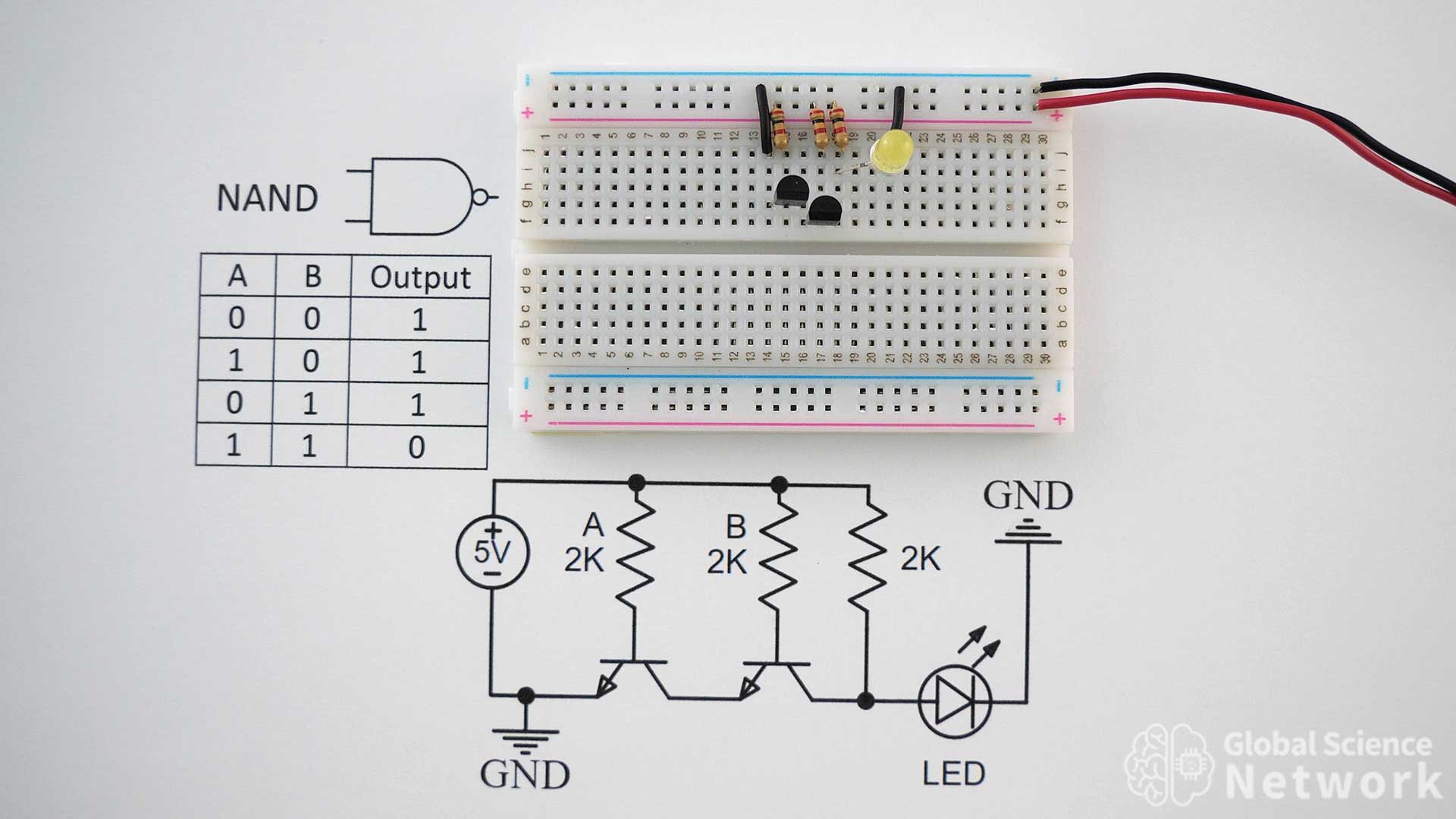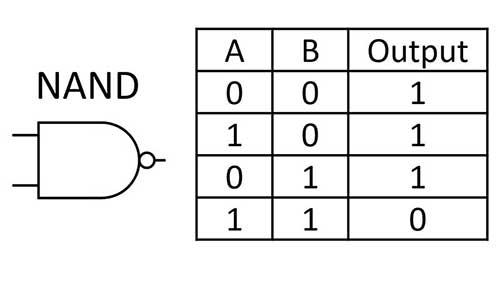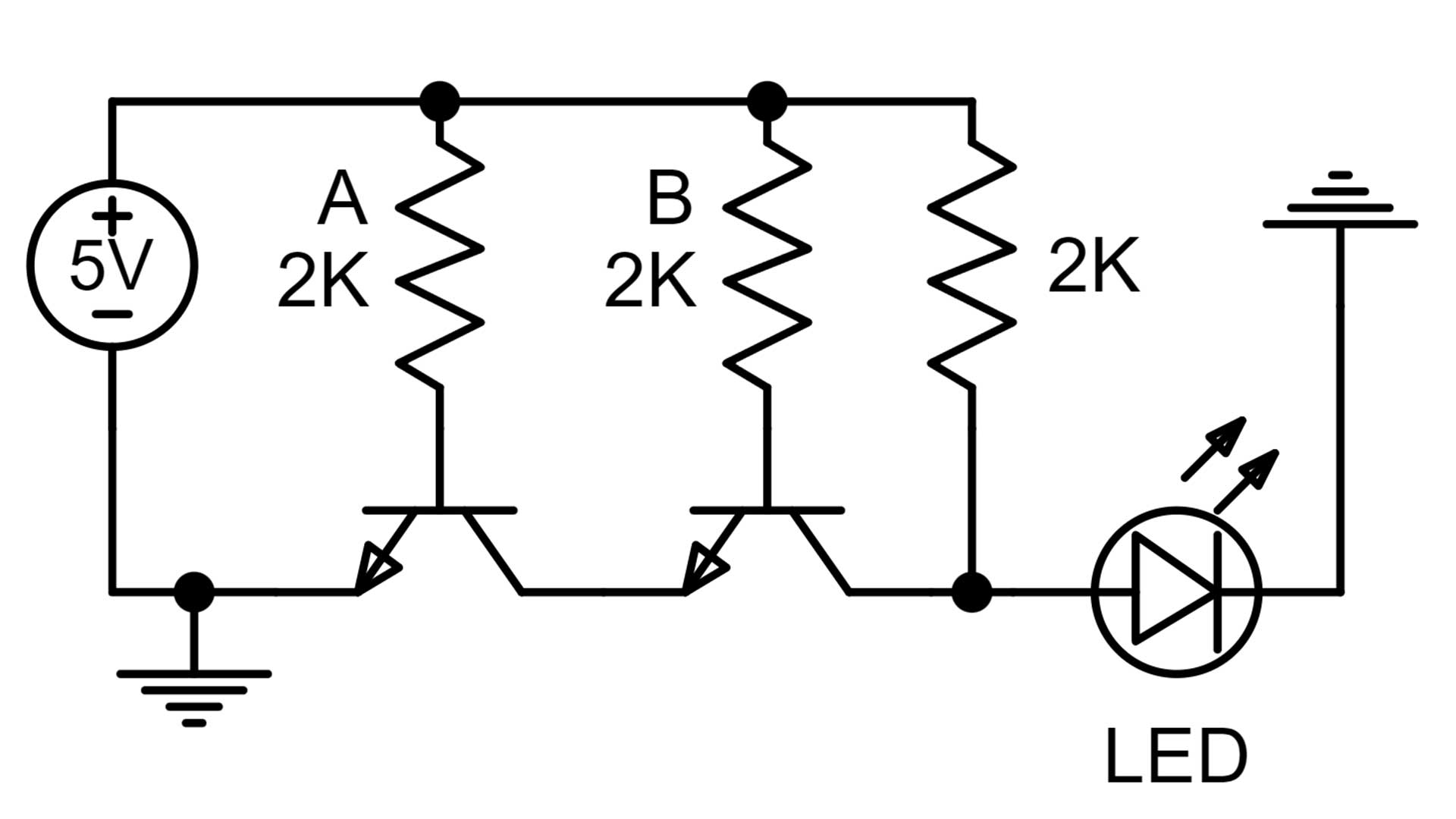The NAND gate is a universal gate that can be used to build every other type of logic gate. It can be built on a breadboard using only two transistors. The NAND gate is essential to making calculators and computers work. This is one of the simplest and most used digital logic gates. Most of the time the logic gates are incorporated into integrated circuits, computer memory, and computer processors.

The picture above shows a simple NAND gate circuit that is made on a breadboard using two 2N2222 NPN transistors, three 2K resistors, and a yellow LED. Power is supplied at 5 volts from a battery pack.
From the left, the first two resistors are inputs A and B. The input resistors connect to the base of the transistors. If the resistor is in place the input is on as it connects to the positive 5-volt rail. If the resistor is removed the input is off.
This video shows how to build all types of logic gates. At 21:47 the NAND gate is discussed in detail. Understanding how all digital logic gates work is very important and I recommend watching the full video. This will make it so you can build calculators, computers, and even more advanced computational devices.

The truth table for a NAND gate shows when the output is on or off based on inputs A and B. In this case, the output is only off during the case when A and B are both on. Otherwise, the output will be on.

The circuit diagram shows how to place the transistors, resistors, LED, and wires to make a NAND gate for demonstration purposes. In this case, when the output is on the LED will turn on. When building larger circuits the output will be sent further down the circuit.
NAND gates are often the primary logic gates used to build a computer. In the video above NAND gates are used to build data flip flops which are used to build the accumulator register, register B, and output register. NAND gates are also used to build full adders as part of the ALU.

Cody started the Global Science Network with the idea people should be focusing more time, energy, and resources on useful projects. He has a bachelor’s degree in aerospace engineering and a master’s degree in mechanical engineering. Cody has worked for the US federal government, a university, a large corporation, small businesses, and for himself. He has done human brain computer interface research and is currently working towards creating non-biological human consciousness.